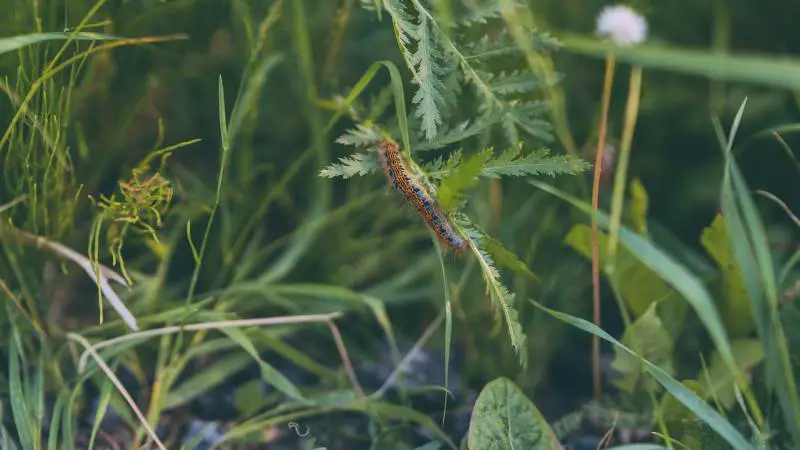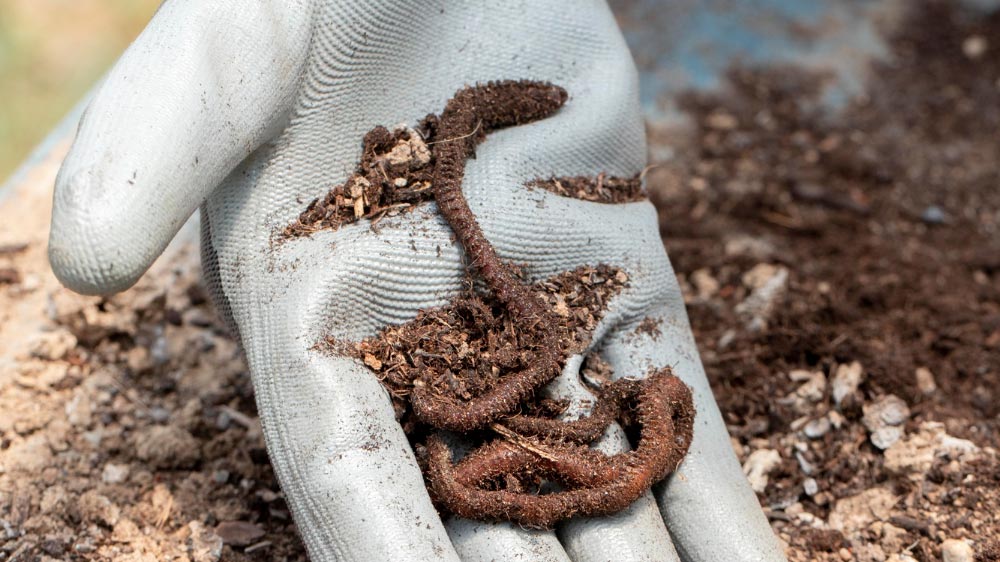5 Reasons Why There Are No Worms In Your Garden

There are countless explanations for why there are no worms in your garden, and none of them will give you a warm feeling. Your soil will lose its structure without worms and eventually become sterile.
Worms are responsible for turning the soil upside down and adding organic matter. Therefore, they are good for your soil since they make it productive by adding rich spurts. However, you must invite them into your soil.
These incredible digging creatures are living, breathing, gangster engineers that recycle organic matter to keep your soil healthy.
Why Are There No Worms in My Garden?
1. Soil Toxicity
It may seem impossible, but the occasional spill of certain chemicals is not suitable for the soil. Chemicals such as diesel fuel or the excessive use of herbicides and pesticides can make it uninhabitable. Worms, in this case, will ingest and absorb toxins from the soil through the skin, killing them.
The only solution is to remove and replace the soil, which is costly and time-consuming.
Solution
These creatures must be exposed to sub-lethal contaminant levels to rectify this problem. Try burying a banana, grape, or ground coffee peel about 15 cm underground and covering it with mulch. This is if the soil in your garden is a suitable habitat for worms, and you still can’t see them.
After a few days, check to see if they have found their way to the goodies.
2. Invasive Species
You may have been unfortunate to be invaded by an alien species, such as the New Zealand flatworm, which predates worms. When such a predator purifies the soil from worms, it is impossible that you would still find them. This is because little is left to eat since all the food has been depleted.
There is no other solution to this problem than to buy native worms (you can buy them from a worm farm). Also, you can reintroduce them from someone good enough to dig up some from their soil. The technique here is to kill any predatory worms you may encounter and try to keep them out.
In other words, you declare absolute war on the invaders.
Solution
Knowing if this is the case can be challenging and may even require a soil test. You can do an informal check yourself by filling your garden with a 5-gallon bucket of soil and adding healthy worms. Dig in the soil twice weekly and find worms to check for suitability. Whether you have parasites or predators, you will find that the viability of the worms will decrease.
3. Type of Weather
For example, the Red Wigglers seem closer to the surface but still below the surface. When light hits a worm, it is its instinct to dig into the ground and hide. Because worms need breathe through their skin, they must stay in moist soil. This is the only way they can keep a coat of mucus on their body.
You are more likely to find them about one meter away in rich, moist soil that remains shaded and is not treated with poison. You won’t find them in dry, sandy gravel conditions.
Solution
Consider burying a banana peel, grape, or ground coffee about 15 cm underground and covering it with mulch. This is if the soil in your garden is a suitable habitat for worms, and you still can’t see them. After a few days, check to see if something has found the right path for the worms.
They may have, but you rarely see a worm species that lives deep down in heavier soil. They are olive green; when disturbed, it spirals tightly and smells very strange.
4. Worms Were Never Present
The area where you do the gardening may never have worms. Depending on where you live, there probably shouldn’t be worms in your garden. That’s why you’ve never seen worms in your garden. For worms to grow and live naturally, the soil must have a certain consistency and moisture. When worms ingest soil, it undergoes chemical and physical changes in the body of the worms and creates the fresh, enriched soil that our plants enjoy.
The more worms you have, the more the soil is treated, and the bigger and healthier your plants become.
Solution
If you would like to add them to your garden (they will do amazing things in your garden), contact your local nursery to see if they sell them. Most nurseries do. However, if your nursery doesn’t sell them, search “Earth Worm Farms” on Google. This way, you will see if there is a farm where you can buy worms to aerate your garden.
Check your garden after the rain or sprinklers have been turned on. Rain softens the soil, allowing the worms to tunnel to the surface. That is where they all gather to breed before returning to feed unless they get stuck on the pavement.

5. Chemicals
Numerous chemicals that destroy the worms’ population will also kill grass and other valuable insects and animals in your garden. Look for the least toxic mixtures available if your worm population is large enough to warrant chemical repellents. Some chemical repellents can irritate worms and make them crawl to the surface, where they can be mowed, wiped, or removed by hand.
Other chemicals, such as carbaryl or imidacloprid pesticides, can eliminate worms.
Solution
Please read and follow the instructions for each chemical product you intend to use. This reduces the risk of damage to other animals and plants.
Benefits of Having Worms in Your Soil
You already learned why your soil is healthy when earthworms are present. And since earthworms mainly rely on and thrive with the microorganisms that live in their environment, they also increase the microorganisms in the soil.
How?
Through their casts and their feces.
It’s like a closed loop of give and take – a symbiotic relationship. And as the earthworms move around the oil, they mix the soil as they travel to the deepest parts of the ground. This mixing allows microorganisms to reach and bring life even to the lower levels of your soil, enriching it.
They also carry plant residues into the deep parts of the soil, stimulating growth. And as they burrow deep into the soil, they also improve their porosity, decreasing surface water tension.
And because of that, when earthworms are present in your soil, they allow easy movement of water in the soil, helping and encouraging plant roots to penetrate the soil deeper.
Are There Worms In Your Soil?
On the bright side, you may have worms, but they are few, and you haven’t seen them. Introduce as much organic material as you can find. This might include animal waste, cow manure, and compost. After that, add some worms you borrowed from friends and neighbors.
This will help develop a safe atmosphere for your worm population that will continue to grow and multiply.